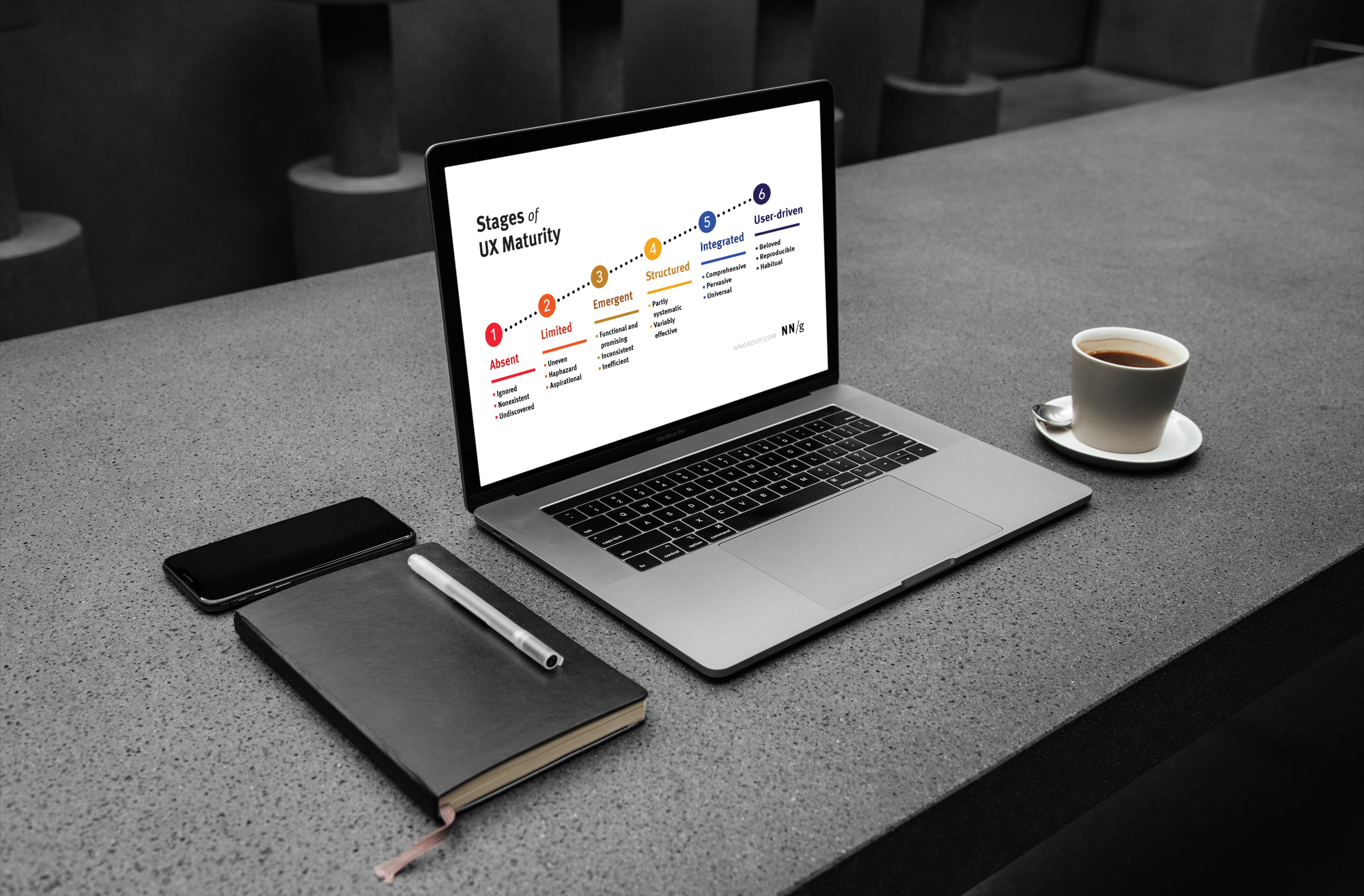
Growing MiWay’s ability and desire to successfully deliver user-centred design.
Background
Organisation: MiWay Insurance
UX Maturity Level at start: 2 (Awareness)
Target UX Maturity Level: 3 (Adoption)
Duration: 9 months (ongoing)
Team:
Project Lead and UX Designer : Lerato Serobatse
UX Designers: 2
Product Owner: 1
Stakeholders: Marketing, Sales, Client Services, Senior Leadership
Overview
At UX Maturity Level 2, the MiWay has achieved basic awareness of user-centered design practices. UX was recognised, but it was still seen as a secondary function.
The focus now was moving to Level 3 (Adoption), where UX processes are more systematically adopted and integrated into product development, and the UX team collaborates closely with cross-functional teams.
This is the level where UX starts to be implemented as a regular part of the product development lifecycle, and the MiWay begins to understand the tangible benefits of user-centered design.
Problem Statement
Despite awareness of UX’s importance, MiWay faced issues with:
Inconsistent Application of UX Processes: UX was not embedded in all projects. Some teams were still bypassing UX activities.
Low Cross-Functional Collaboration: UX input was often siloed, with UX designers working separately from product and development teams.
No Formal Research Integration: User research was not conducted, and could not be incorporated into product development decisions.
Inconsistent UX Deliverables: The UX team lacked formal guidelines and templates for deliverables, resulting in inconsistent outputs across different projects.
Objectives
The goal was to move from Level 2 (Awareness) to Level 3 (Adoption), where UX practices become a more formal and integrated part of product development. MiWay needed to:
Increase Cross-Functional Collaboration: Strengthen collaboration between UX, product, and development teams by embedding UX in every stage of the product lifecycle.
Standardise UX Processes: Implement standardised UX research and design processes, ensuring consistent execution across projects.
Create and formalise a UX Research: Integrate user research into product development decisions by establishing a regular cadence for user testing and feedback loops.
Improve UX Influence: Increase the influence of UX within the organisation by demonstrating its direct impact on KPIs like customer satisfaction, conversion rates, and retention.
Develop a UX Toolkit: Create a toolkit with templates, guidelines, and frameworks for UX deliverables (e.g., wireframes, personas, journey maps).
How transitioned to Level 3 (Adoption)
Step 1: Strengthen Cross-Functional Collaboration
Co-Design Sessions:
Host regular co-design sessions where UX, product managers, and developers collaborate on ideation and early-stage wireframes. This ensures alignment and shared ownership of the design.Agile Integration:
Integrate UX into Agile sprints by ensuring UX work is included in each sprint planning session. UX deliverables like wireframes, prototypes, and user testing insights will be part of the sprint deliverables.Design Critiques and Reviews:
Implement regular design review sessions with cross-functional teams to gather early feedback, reducing misalignment later in the development cycle.
Step 2: Standardise UX Processes
UX Process Framework:
Develop a standardised UX process that outlines key stages for research, design, testing, and implementation. This framework will be applied to all projects, ensuring consistency in the design process.Documentation and Templates:
Create a set of templates for common UX deliverables, such as personas, journey maps, user flows, and wireframes. This helps standardize outputs across different teams and projects.UX Guidelines:
Introduce internal UX guidelines that outline best practices for user research, information architecture, interaction design, and visual design.
Step 3: Formalise UX Research
Research Repository:
As and when we did any research or received any insights/metrics, we built a research repository where insights from analytics platforms, surveys, and usability tests are stored. This will continue to be accessible to all teams, allowing them to reference past findings when making decisions on future designs.KPIs and Metrics:
Defining and tracking UX-specific KPIs such as task completion rates, user satisfaction scores, and NPS (Net Promoter Score), helped us define product success metrics and helped us see the impact of UX measurable and transparency.
Step 4: Building a UX Toolkit
Design System Expansion:
We expanded the minimal existing design system with more detailed components, patterns, and interaction guidelines. We ensured the system was regularly updated and that developers and designers are aligned on its usage.Tools and Training:
We started training for product owners/managers and developers on UX tools like Figma and Axure. This promoted better collaboration and gave non-UX team members a stronger understanding of design processes.
Step 5: Measure Impact and Iterate
Customer Feedback Integration:
Introduce post-launch surveys and in-app feedback tools to gather insights from real users. This data will be used to prioritise future enhancements and iterations.Post-Mortem Reviews:
Conduct post-mortem reviews for each project, assessing how UX processes impacted the project outcomes. Document lessons learned and apply these insights to future projects.
Reflection and Next Steps
Challenges Faced:
Initial Resistance: Some teams and senior leadership were hesitant to adopt new UX processes, requiring ongoing advocacy and education from the UX team.
Time Constraints: Aligning UX efforts with Agile sprints proved challenging, requiring careful prioritisation and planning.
Next Steps:
As MiWay becomes more comfortable with the implemented UX processes, the next goal will be to move towards Level 4 (Structural), where UX is not just adopted but integrated into MiWay’s strategy at a high level.
Expand the UX team further, adding specialists in content strategy, user research and more team members, accessibility, and service design to handle more complex projects.
By making these changes, MiWay Insurance was able to evolve from ad-hoc adoption of UX processes to a state where UX is embedded in their product development, leading to more user-centered and successful digital products.



